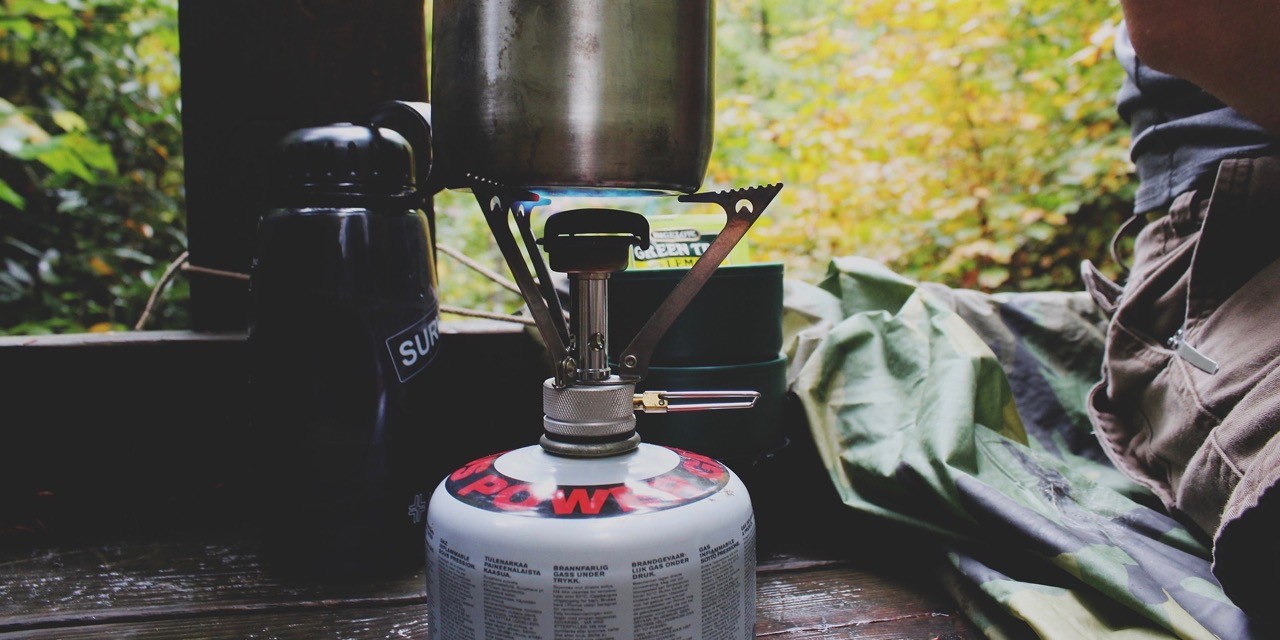Can you use a camping stove indoors? The short answer is generally no. While it might seem like a convenient solution, using a camping stove indoors poses significant safety risks. This article will explore these dangers in detail and offer safer alternative indoor cooking methods and emergency indoor cooking solutions. It’s crucial to understand the risks of using camping stoves indoors before considering it, and to prioritize indoor camping stove safety.

Image Source: outdoors.com
The Clear and Present Danger: Carbon Monoxide Poisoning
The most significant danger is carbon monoxide poisoning camping stove. Camping stoves, especially those burning propane, butane, or white gas, produce carbon monoxide (CO) as a byproduct of combustion. CO is an odorless, colorless gas that can quickly build up in enclosed spaces.
The Insidious Threat of Carbon Monoxide
- How CO Affects You: When inhaled, CO replaces oxygen in your bloodstream. This prevents your vital organs from getting the oxygen they need to function properly.
- Early Symptoms: Initial symptoms of CO poisoning can mimic the flu: headache, dizziness, nausea, fatigue, and confusion. These symptoms are easy to dismiss, leading to further exposure.
- Severe Consequences: Prolonged exposure can lead to loss of consciousness, brain damage, and even death.
- Why it’s Especially Dangerous Indoors: Unlike outdoor environments where CO disperses quickly, indoor spaces allow CO to accumulate rapidly to dangerous levels. Camping stove indoor ventilation is almost never sufficient to prevent this build-up in a home.
Propane Camping Stove Dangers
Propane camping stoves release a larger amount of carbon monoxide than other types. This elevates the risks of carbon monoxide poisoning camping stove when utilizing it inside.
Butane Camping Stove Dangers
Though often considered slightly cleaner-burning than propane, butane stoves still produce harmful carbon monoxide. Precautions for indoor camping stove use are nearly impossible to implement effectively enough to negate the hazard.
Is it safe to use a camping stove indoors, even with ventilation?
Even with open windows and fans, achieving adequate indoor camping stove ventilation is very difficult and unreliable. It’s almost impossible to ensure that CO levels remain safe, making it not safe to use a camping stove indoors even with these measures.
Other Hazards of Indoor Camping Stove Use
Besides carbon monoxide, other dangers lurk when using a camping stove indoors.
Fire Hazards
- Flammable Materials: Kitchens and homes contain many flammable materials like curtains, paper towels, and cooking oils. A stray spark or a tipped-over stove can quickly ignite a fire.
- Grease Fires: Cooking with oil on a camping stove increases the risk of grease fires, which can be extremely difficult to extinguish.
- Unstable Surfaces: Camping stoves are designed for outdoor use and may not be stable on smooth indoor surfaces. This can lead to spills and accidents.
Air Quality Concerns
- Combustion Byproducts: Besides CO, camping stoves release other harmful pollutants, such as nitrogen dioxide and particulate matter. These can irritate the respiratory system, especially for people with asthma or other breathing problems.
- Smell and Odor: The fumes and odors from burning fuel can be unpleasant and linger in the house long after cooking.
Explosion Risks
- Fuel Leaks: Damaged or improperly connected fuel canisters or tanks can leak, creating a risk of explosion.
- Overheating Canisters: High temperatures can cause fuel canisters to overheat and potentially explode.
Fathoming the Precautions for Indoor Camping Stove
If, despite the warnings, you are considering using a camping stove indoors in an emergency (and only as a last resort), understand that precautions for indoor camping stove use are extensive and provide only a marginal increase in safety:
Carbon Monoxide Detector
- Essential Investment: A working carbon monoxide detector is an absolute must. Place it near the cooking area, but not directly next to the stove.
- Regular Checks: Ensure the detector has fresh batteries and is functioning correctly.
Ventilation is Key
- Open Windows and Doors: Maximize camping stove indoor ventilation by opening as many windows and doors as possible to create cross-ventilation.
- Use Fans: Use fans to circulate air and help disperse any CO that may be produced.
Clearance From Flammables
- Safe Distance: Keep the stove well away from any flammable materials.
- Clear Space: Ensure that the stove is placed on a stable, non-flammable surface.
Constant Supervision
- Never Leave Unattended: Never leave a lit camping stove unattended.
- Vigilant Monitoring: Stay alert for any unusual smells, sounds, or changes in the stove’s performance.
Limiting Use
- Short Bursts Only: Use the stove for the shortest possible time. Cook only what is needed and turn it off immediately afterward.
- Avoid Prolonged Cooking: Prolonged cooking will increase the risk of CO buildup and other hazards.
Proper Stove Maintenance
- Inspect Regularly: Before each use, inspect the stove for any damage, leaks, or malfunctions.
- Follow Instructions: Strictly adhere to the manufacturer’s instructions for operation and maintenance.
Fire Safety Measures
- Fire Extinguisher: Keep a fire extinguisher nearby and know how to use it.
- Baking Soda: Have a box of baking soda readily available to smother grease fires.
- Emergency Plan: Have an escape plan in case of a fire or other emergency.
Important Note: Even with all these precautions, the risk of CO poisoning and fire remains significant. These steps are only intended to minimize the risks, not eliminate them entirely. Always prioritize safety and consider safer alternative indoor cooking options whenever possible.
Alternative Indoor Cooking Solutions
Fortunately, several safer indoor stove alternatives exist, eliminating the need to risk using a camping stove indoors. These alternative indoor cooking methods offer convenient and safe ways to prepare meals during power outages or other emergencies.
Electric Appliances
Electric appliances pose a lower risk than camping stoves, especially in terms of carbon monoxide emissions.
Electric Hot Plate
- Convenience: Small, portable, and easy to use.
- Safety: No open flame, reducing the risk of fire.
- Power Requirements: Requires a source of electricity, such as a generator or battery inverter.
Electric Skillet
- Versatility: Can be used for frying, sautéing, and simmering.
- Temperature Control: Offers precise temperature control for various cooking needs.
- Power Requirements: Requires electricity.
Microwave Oven (with Generator)
- Fast Cooking: Quickly heats food.
- Power Requirements: Requires a generator to operate during a power outage.
Non-Electric Cooking Methods
These methods offer cooking options when electricity or fuel is unavailable.
Solar Oven
- Environmentally Friendly: Uses sunlight to cook food.
- Slow Cooking: Cooking times are longer than traditional methods.
- Weather Dependent: Requires sunny conditions to operate effectively.
Thermal Cooker
- Heat Retention: Retains heat for several hours, allowing food to cook slowly.
- No External Power: Does not require any external power source after the initial heating.
- Safety: Minimal risk of fire or CO poisoning.
Rocket Stove (Outdoor Use Only)
- Efficient Combustion: Burns small pieces of wood efficiently.
- Outdoor Use: Designed for outdoor use only due to smoke and fire hazards.
- Sustainability: Uses readily available fuel sources.
Prepared Foods and No-Cook Meals
- Convenience: Ready to eat without any cooking required.
- Options: Canned goods, protein bars, ready-made salads, and sandwiches.
Table: Comparing Indoor Cooking Alternatives
| Cooking Method | Fuel Source | CO Risk | Fire Risk | Power Required | Advantages | Disadvantages |
|---|---|---|---|---|---|---|
| Electric Hot Plate | Electricity | Low | Low | Yes | Convenient, portable, no open flame | Requires electricity |
| Electric Skillet | Electricity | Low | Low | Yes | Versatile, temperature control | Requires electricity |
| Microwave (with Generator) | Electricity | Low | Low | Yes | Fast cooking | Requires generator |
| Solar Oven | Sunlight | None | None | No | Environmentally friendly, no fuel needed | Weather dependent, slow cooking |
| Thermal Cooker | Heat | None | Low | No | Retains heat, no external power needed | Requires initial heating |
| Rocket Stove | Wood | High | High | No | Efficient combustion, sustainable (OUTDOOR ONLY) | Outdoor use only, smoke hazard |
| Prepared Foods | None | None | None | No | Convenient, no cooking required | Limited nutritional value, can be expensive |
Choosing the right indoor stove alternatives depends on your specific circumstances, available resources, and risk tolerance.
Portable Stove Indoor Use Considerations
While this article strongly advises against using camping stoves indoors, understanding what makes them “portable” can help evaluate other options. A truly portable stove indoor use-safe alternative would ideally possess:
- Low or Zero Emissions: Minimizing CO and other harmful gases.
- Electric or Non-Combustion Based: Relying on electricity or heat retention rather than burning fuel.
- Stability and Safety Features: Designed for safe use on indoor surfaces.
- Ease of Use: Simple to operate and maintain.
Deciphering Emergency Indoor Cooking Solutions
In genuine emergencies where power is out and all other options are exhausted, carefully consider the trade-offs of using a camping stove indoors versus the potential consequences of not being able to cook. Remember that these are emergency indoor cooking solutions, not routine practices. Prioritize:
- Carbon Monoxide Detection: Ensure a working detector is present.
- Maximum Ventilation: Open all possible windows and doors.
- Limited and Supervised Use: Cook only what is necessary and never leave the stove unattended.
Assessing the Risks of Using Camping Stoves Indoors: A Recap
The risks of using camping stoves indoors are substantial. Carbon monoxide poisoning, fire hazards, and air quality concerns make it a dangerous practice. While extreme situations may warrant it as a last resort, understanding and mitigating the risks is paramount. Prioritize safer alternative indoor cooking methods whenever possible.
FAQ: Your Questions Answered
Q: Can I use a camping stove indoors if I crack a window?
A: Cracking a window is NOT sufficient ventilation to prevent carbon monoxide poisoning. It only provides a false sense of security.
Q: What is the safest type of camping stove to use indoors?
A: No camping stove is truly safe to use indoors. All combustion-based stoves produce carbon monoxide.
Q: Can I use a camping stove in my garage with the door open?
A: While better than inside your house, using a camping stove in a garage, even with the door open, still carries risks. Carbon monoxide can accumulate, and the garage may contain flammable materials.
Q: What should I do if I suspect carbon monoxide poisoning?
A: Immediately get everyone out of the building into fresh air. Call emergency services. Do not re-enter the building until it has been cleared by professionals.
Q: Are there any camping stoves specifically designed for indoor use?
A: No, there are no camping stoves specifically designed and safe for indoor use. All camping stoves are intended for outdoor use only.
Q: Where can I get more information about carbon monoxide safety?
A: Contact your local fire department, public health department, or visit the website of the Consumer Product Safety Commission (CPSC).

Melody Smith is a passionate writer, outdoor enthusiast, and camping expert based in the Seattle Metropolitan Area. With a deep love for nature and adventure, she shares her personal experiences, tips, and insights on MyCampingPro.com. A seasoned camper and traveler, Melody combines her creative background in design and writing with her love for the great outdoors, offering practical advice and inspiring stories to help others make the most of their outdoor experiences. When she’s not exploring the wilderness, you can find her painting, collecting vintage treasures, or diving into a good book.
